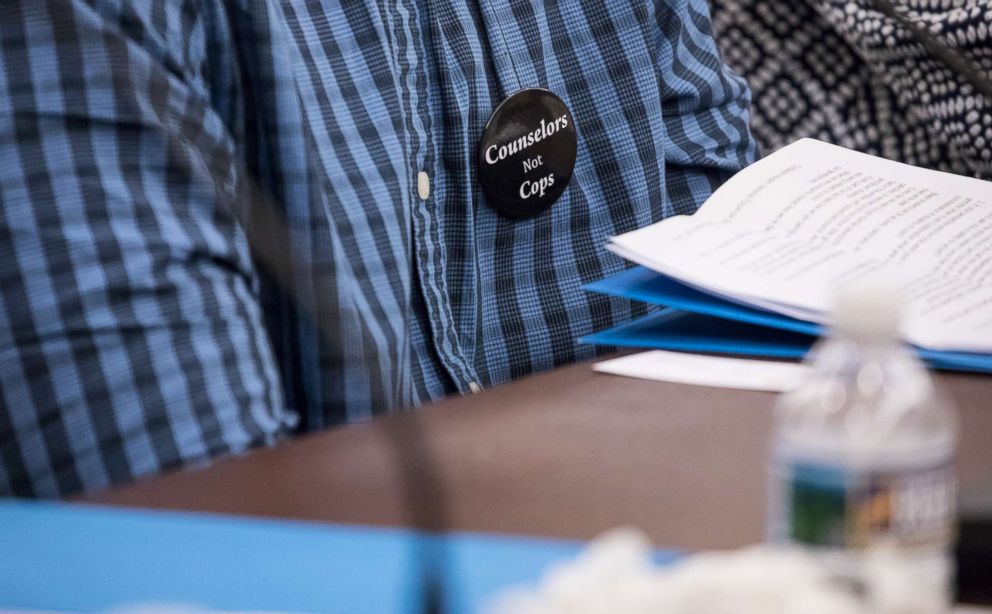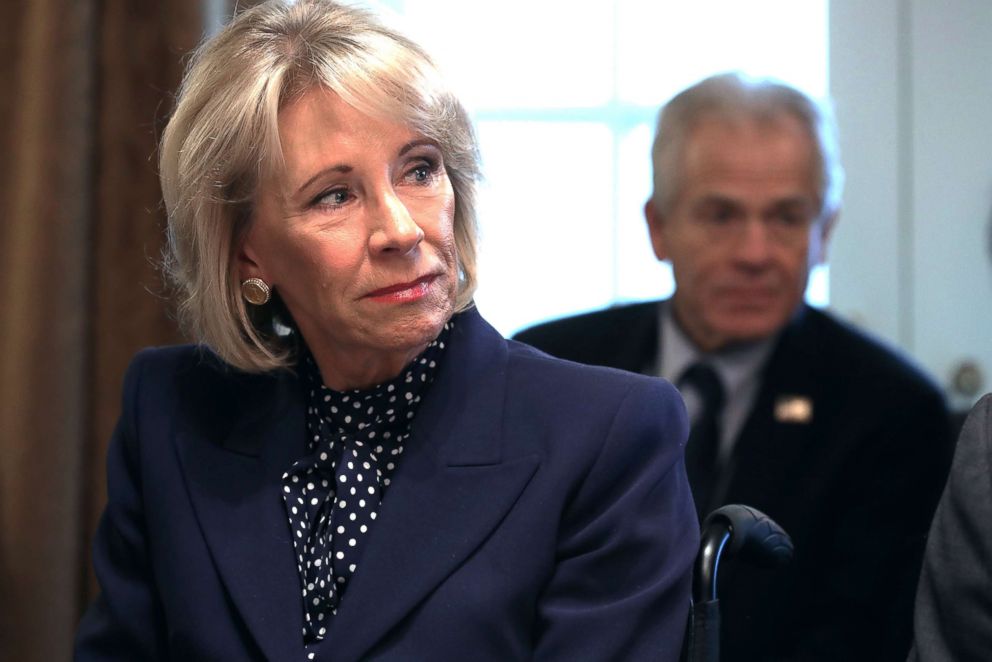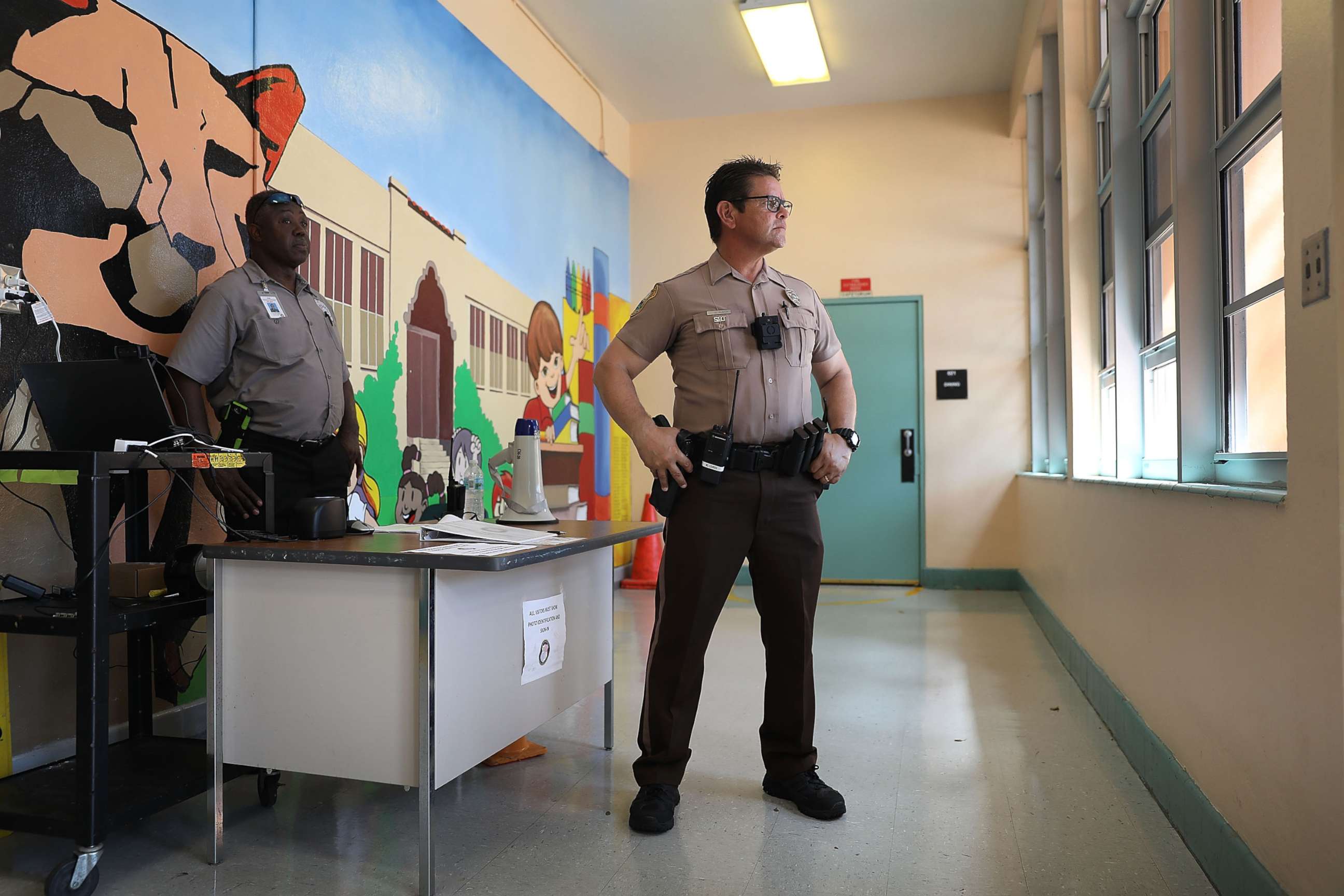Schools getting more police but at the expense of counselors, nurses: Report
Certain students are more likely to be arrested at school, the report found.
About 14 million students attend schools across the U.S. where they walk the halls alongside police officers but don't have access to counselors, nurses, psychologists or social workers, according to an ACLU report released Monday.
And of the schools that do provide students access to mental health professionals, about 90 percent fail to meet minimum staff-to-student ratio, which the report found can mean one counselor is responsible for more than 400 students.
But the increasingly popular decision to fund police officers in schools, combined with a lack of mental health experts available, has had a disproportionate effect on both students of color and students with disabilities, the report found. Nationwide, these marginalized students were subject to more discipline bias and overcriminalization than their peers, according to a review of 2015-2016 data from the Department of Education.
While arrest rates were higher across the board for schools with police compared with schools without police, students with disabilities were arrested almost three times more than peers, and in certain states were 10 times as likely to be arrested. Black students were arrested at a rate three times higher than white students, and sometimes eight times higher, the report found.
Black girls -- about 13 percent of female students -- accounted for nearly 40 percent of the girls arrested in schools and were arrested at least four times more often than white girls. Latino and Latina students were arrested in schools at a rate 1.3 times higher than white students. Native American and Pacific Islander students were more than twice as likely to be arrested as white students nationwide, the report found.

Meanwhile, mental health professionals are often "the first to see children who are sick, stressed, or traumatized -- especially in low-income districts," the report found. Having mental health professionals at schools leads to better attendance rates, academic achievement and graduation rates, while bringing down the rates of suspensions, expulsions and other disciplinary incidents.
Data show mental health professionals in schools "can also improve overall school safety," the report found. Levels of depression and anxiety are at record highs for school children, the report said, which cited a 70 percent increase in suicide rates for children ages 10-17 over 10 years, from 2006 to 2016, according to the Centers for Disease Control and Prevention.
"By contrast, there is no evidence that increased police presence in schools improves school safety," it stated.
On the contrary, several viral videos in 2018 made national headlines after capturing altercations between officers and teenagers at schools. In a case in Louisiana, two police officers were indicted for assaulting a 14-year-old boy after surveillance footage surfaced of an officer lifting him over his shoulder and slamming him to the ground.
The ACLU report comes during a shift in federal policy around school discipline.
In 2014, the Obama administration attempted to address the fact students of color across the country were often disciplined more than their peers by warning schools that if they had high racial disparities in disciplinary reports they'd be subject to a civil rights investigation.
But Department of Education Secretary Betsy Devos has begun to roll back this policy, saying local schools should make decisions free of federal guidance. Asking schools to hit "racial quotas" with their disciplinary actions instead pressures schools to let students off the hook because of how the numbers will look, DeVos said in a statement about the policy updates last year.
The ACLU report is the first of its kind because of the level of state-by-state detail provided by the Department of Education, which recently and for the first time required every public school to report the number of social workers, nurses and psychologists employed.

Loretta Whitson, who worked with the ACLU on the report, began her career as a school counselor in Los Angeles County and is now the executive director of the California Association of School Counselors.
One of the 49 states in the country that fails to meet student-to-counselor guidelines, California averages 682 students to every one counselor, the report found.
Whitson remembers working to lower this ratio in her district, Monrovia Unified, when a school counselor asked her a question while they were out to dinner. At the time, Whitson's goal was 500 students per counselor.
"She asked me, 'Do you know the names of 500 people?' And I said, 'I don't,'" Whitson said. "And I will never forget that, because what we're trying to do is not know a student's name but know their story, so we can be of assistance to them. But how could you with that many people?"
A lot of the time, counselors are "dealing with almost an urgent care situation" when students come to them in tough situations -- often the first "band-aid to the injury," Whitson said.
Whitson has watched for 30 years as the police presence in schools has increased, especially after the Columbine shooting in Colorado that left 15 dead. She remembers being called to Sacramento that day as part of a panel of experts to inform California legislators on how to protect students.
She called for counseling starting in kindergarten, she said, but what was eventually included in legislation was funding for schools that could go toward either counselors or police officers.
"Some districts chose counselors, and some chose police officers -- that was the beginning of that, at least in California," Whitson said.
It was around this time that federal dollars also increasingly went to police in schools, beginning with a Department of Justice program that has spent nearly $300 million on school policing infrastructure since 1995, according to a 2017 report from the ACLU. The trend continues today to combat a wave of deadly school shootings. According to the report, "six months after the Parkland school shooting, more than $1 billion was added to school security budgets by state legislatures, with funding for School Resource Officers (SROs) being one of the largest items."

Whitson, who oversaw a district where around half of the students were considered "socioeconomically disadvantaged" in 2016, recalled clear examples throughout her career where students would've been better off with access to counselors.
In one case, she had to sign off on the expulsion of a girl who got in a fight at school and hit a security guard while the fight was being broken up -- a situation Whitson saw as completely avoidable had counselors intervened before punches were thrown.
"If we'd done an ounce of prevention, it would have shifted everything for this girl," Whitson recalled. "I was very angry that it wasn't handled before it got to that point."
Expulsion, however, is the tip of the iceberg. Students who attend schools with police officers instead of school resource officers or security guards also can face formal criminal charges -- most of which "arise from criminalizing common adolescent behaviors," the report found.
"For example, students have been charged for 'disorderly conduct' for cursing, for 'drug possession' for carrying a maple leaf, and for 'disrupting school' by fake burping,” the report found.
In Florida, one of the only states with detailed data on youth arrests, more than 60 percent of school arrests were for misdemeanors -- the most common of which was for fighting, which was charged as "assault/battery." The second-most-common was "disorderly conduct."




